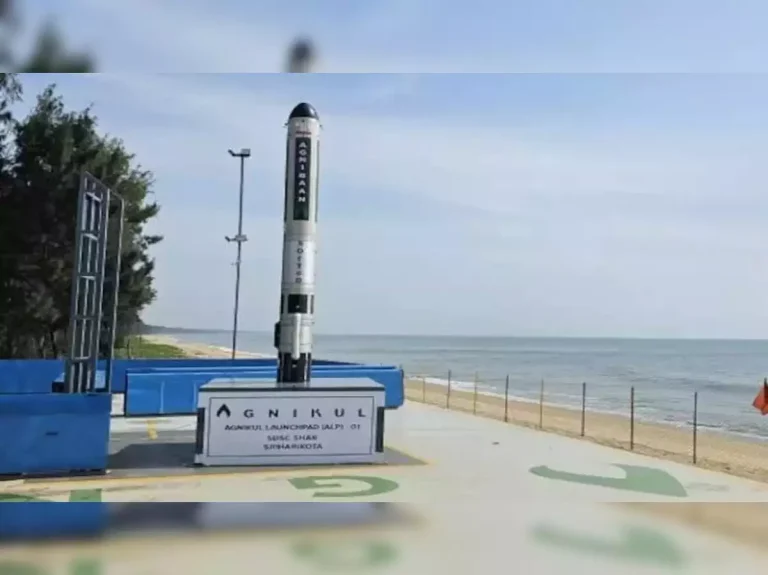Thursday, 30 May 2024, Bangalore, India
A Chennai-based start-up company Agnikul Cosmos has achieved a breakthrough in space technology with the recent sub-orbital test-flight of a 3D-printed semi-cryogenic private rocket named Agnibaan. The launch was done from Sriharikota and this makes it the second private entity in India.
Journey to Launch the Sub-orbital version of Agni
The journey to launch comes in the wake of various attempts by Agnikul Cosmos to fine-tune the Agnibaan Sub-Orbital Technology Demonstrator (SOrTeD). Its last two attempts were met with technical difficulties, forcing the company to delay. However, their relentless determination to accomplish its mission of propelling India’s capacity in private space launch came through on this third attempt.

Image Source: Twitter
Lift-carrying Capacity and Advanced Innovations
Agnibaan is a two-stage solid booster rocket that has a lift-carrying capacity of up to 300 kg to an orbit of about 700 km. There are some advanced innovations incorporated in its design such as the use of a semi-cryogenic engine that uses both liquid and gaseous propellants. This technology has not been showcased by the Indian Space Research Organization (ISRO).
Rocket Software and Agnilet Engine
The rocket has an ethernet-based avionic system for the first time ever to ease communication and control during the mission. The autopilot software for the Agnikul was developed in-house and in its totality, signifying the prowess of Indian software engineers.
Agnibaan is propelled by the Agnilet engine, the first and only functional single-piece 3D-printed semi-cryogenic rocket engine. These achievements marked considerable progress in space propulsion systems.

Image Source: Times Now
Duration and Adjustments of the Flight
The mission was finally over after two minutes and thirty seconds. After a short period of time following the liftoff, the rocket maneuvered to a certain heading in relation to the ground or the flight path. At approximately 39 seconds into the flight, for example, the rocket made an adjustment of its path due to wind influences. After about 1 minute and 29 seconds of its airborne flight, Agnibaan attained its highest point of altitude, also known as apogee, and then safely floated back to the sea.
Mission and Philosophy of Agnikul Cosmos
Agnikul realizes that going to space should not be the most difficult part of life or business in space. Their responsibility is to develop and construct launch vehicles to ease and shorten the transition between Earth and space. They primarily target the affordability, flexibility, and dependable launch services for micro and nanosatellites.
Conclusion
However, there have been some hiccups in the institution’s launching timeline; Agnikul Cosmos is undeterred in its mission. The team keeps on trying to overcome the technical difficulties in the performance of the experiments and safety measures.
The first successful test flight of Agnibaan brings India closer to its space goals as the private players continue to contribute to the country’s space endeavors. Agnikul Cosmos has carved out a niche for itself in space history, and Agnibaan has a bright future in India’s space exploration program.










